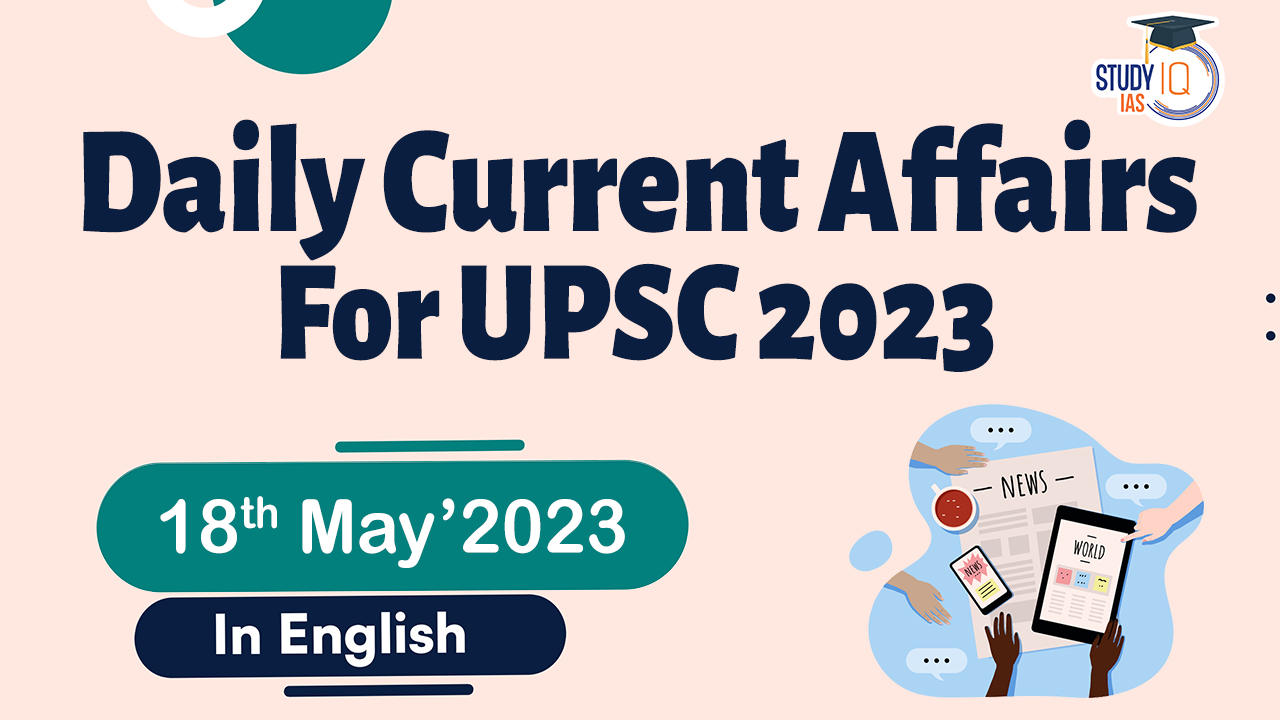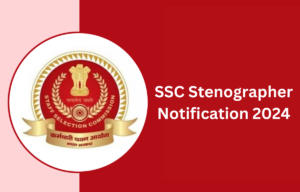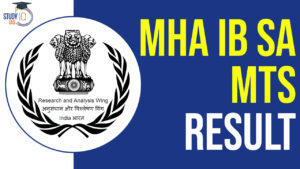Daily Current Affairs for UPSC 2023
Q) Recently seen in news, the ‘Turning off the Tap: How the world can end plastic pollution and create a circular economy’ report was released by which one of the following organizations?
- World Economic Forum
- World Nature Organization
- United Nations Environment Programme
- Intergovernmental Panel On Climate Change
Daily Current Affairs for UPSC – 17 May April 2023
Explanation:
- Option (1) is correct: A recent report ‘Turning off the Tap: How the world can end plastic pollution and create a circular economy’ has been released by United Nations Environment Programme (UNEP). This report outlines the magnitude and nature of the changes required to end plastic pollution and create a sustainable circular economy that is friendly to humans and the environment. Plastic pollution is the buildup of plastic objects and particles in the environment (like bags, plastic containers, and microbeads) that harms wildlife, natural and wildlife habitats, and mankind. It is most visible in developing Asian and African nations, where garbage collection systems are often inefficient. As per the report, currently, world produces 430 million metric tons of plastics each year of which over two-third are short lived products. Plastic could emit 19% of global greenhouse gas emissions allowed under a 1.5°C scenario by 2040 and production is set to triple by 2060 if “business-as-usual’ continues. Global plastic pollution can reduce by 80% by 2040 if countries and companies make policy shifts to a circular economy. Countries need to eliminate unnecessary and problematic plastic uses. They need to make three market shifts: reuse, recycle, and reorient and diversify.
Q) Consider the following statements about Ethanol Blending:
- Ethanol helps decrease the octane number of fuel.
- It helps reduce hydrocarbon emissions by as much as 20 percent.
- India aims to achieve a 25 percent ethanol blending target by 2025.
Which of the statements given above is/are correct?
- 1 and 2 only
- 2 only
- 1 and 3 only
- 1, 2 and 3
Explanation:
- Statement 1 is incorrect: Ethanol is a less polluting fuel and offers equivalent efficiency at lower cost than petrol. Ethanol, an anhydrous ethyl alcohol having chemical formula of C2H5OH, can be produced from sugarcane, maize, wheat, etc which are having high starch content. In India, ethanol is mainly produced from sugarcane molasses by fermentation process. Ethanol can be mixed with gasoline to form different blends. Ethanol serves as an octane booster, which can enhance engine efficiency and lessen knocking noises.
- Statement 2 is correct: As the ethanol molecule contains oxygen, it allows the engine to more completely combust the fuel, resulting in fewer emissions and thereby reducing the occurrence of environmental pollution. Hydrocarbon emissions are reduced by 20% with ethanol blends compared to normal gasoline.
- Statement 3 is incorrect: India aims to achieve a 20% ethanol blending target by 2025. As per the recent reports, Sugar mills in India are on course to meet 12% ethanol blending target for the current ethanol supply year (ESY). More ethanol produced from farm residue will boost farmers’ income and minimise air pollution by reducing the amount of stubble burned.
Q) With reference to Permafrost, consider the following statements:
- It can be found both on land and below the ocean floor.
- The thawing of permafrost can potentially alter the course of rivers.
- Radon gas is released after the melting of permafrost.
Which of the statements given above is/are correct?
- 1 and 2 only
- 2 and 3 only
- 1 and 3 only
- 1, 2 and 3
Explanation:
- Statement 1 is correct: Permafrost is a permanently frozen layer on or under Earth’s surface. It consists of soil, gravel, and sand, usually bound together by ice. Permafrost can be found on land and below the ocean floor. Its thickness can range from one meter to more than 1,000 meters. Upper layer of permafrost known as ‘Active Layer’, that seasonally thaws, allowing for plant growth; this is an essential part of the tundra ecosystem.
- Statement 2 is correct: Permafrost covers about 15% of the Northern Hemisphere or 11% of the global surface area. It is found in areas where temperatures rarely rise above freezing i.e., often found in Arctic regions such as Greenland, the U.S. state of Alaska, Russia, China, and Eastern Europe. Thawing permafrost alters natural ecosystems in many ways as well. It can create thermokarsts, areas of sagging ground, which may alter the flow of rivers and streams, degrade water quality, and impact aquatic wildlife. The thawing of permafrost in the Arctic regions also causes some river banks to erode making it harder to access clean water.
- Statement 3 is correct: Thawing permafrost exposes humans to the ancient bacteria, viruses and pathogens in the ice and the soil. According to a new study, thawing of permafrost could expose the Arctic population to much greater concentrations of the invisible, lung cancer-causing gas Radon.
Q) Consider the following statements about Sagar Parikrama:
- As per this initiative, sea voyages across all coastal states and union territories will be made in order to support fishermen.
- It aims for better implementation of the Pradhan Mantri Matsya Sampada Yojana.
- The Indian Coast Guard is the implementing agency for the initiative.
Which of the statements given above is/are correct?
- 1 and 2 only
- 2 and 3 only
- 3 only
- 1, 2 and 3
Explanation:
- Statement 1 and 2 are correct: Sagar Parikrama is an initiative to organize a sea voyage across all coastal states and union territories to support fishermen, fish farmers, and other stakeholders. It aims to address their concerns and facilitate their economic development by implementing various fisheries schemes and programs like Pradhan Mantri Matsya Sampada Yojana (PMMSY). It will focus on sustainable balance between the utilization of marine fisheries resources for food security of the nation and livelihoods of coastal fisher communities and protection of marine ecosystems.
- Statement 3 is incorrect: Ministry of Fisheries, Animal Husbandry & Dairying is the Implementing Ministry of Sagar Parikrama initiative. Recently, Union Ministry of Fisheries, Animal Husbandry and Dairying have announced the commencement of Phase-V of the Sagar Parikrama initiative. The Parikrama shall be accompanied by the State Fisheries officials, Fishermen representatives, Fish-Farmers entrepreneurs, stakeholders, professionals, officials and Scientists from across the nation. The Phase-V journey will encompass six locations across the states of Maharashtra and Goa.
Q) With reference to Fertilizer Subsidy in India, consider the following statements:
- Under the ‘nutrient-based subsidy’ scheme, urea-based fertilisers are provided at subsidised rates.
- As per the ‘One Nation, One Fertiliser scheme’, fertiliser companies are not allowed to advertise their names on the fertiliser bags.
Which of the statements given above is/are not correct?
- 1 only
- 2 only
- Both 1 and 2
- Neither 1 nor 2
Explanation:
- Statement 1 is incorrect: Recently, Union Government said total subsidy on fertilizer could touch ₹2.25-lakh crore during FY24. Under the Nutrient Based Subsidy (NBS) Scheme, fertilisers are provided at subsidised rates based on the nutrients contained, namely Nitrogen (N), Phosphate (P), Potash (K) and Sulphur (S). It does not include urea-based fertilisers.
- Statement 2 is incorrect: One Nation One Fertilizer (ONOF) Scheme aims to standardize fertilizer brands across the country, regardless of the firm that manufactures it, by including all types of fertilizers, including DAP (di-ammonium phosphate), NPK (nitrogen, phosphorus, and potassium), and urea, under the brand name “Bharat.” Under this scheme, companies are only permitted to advertise their name, brand, logo, and other pertinent product information on one-third of fertilizer bags under the new “One Nation One Fertiliser” initiative. The “Bharat” brand and Pradhanmantri Bharatiya Jan UrvarakPariyojana logo will be required to be exhibited on the remaining two-thirds of the space.


 SSC Stenographer 2024 Notification Out a...
SSC Stenographer 2024 Notification Out a...
 IB SA MTS Final Result 2024 Out at mha.g...
IB SA MTS Final Result 2024 Out at mha.g...
 Model Skill Loan Scheme, Eligibility, Re...
Model Skill Loan Scheme, Eligibility, Re...

















